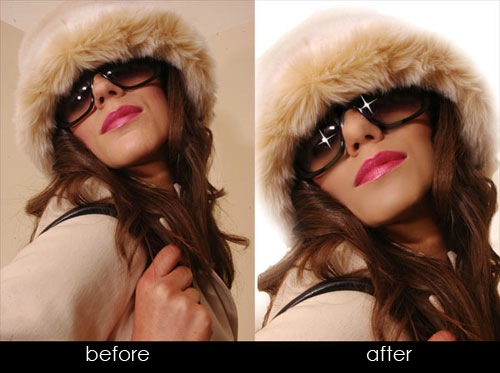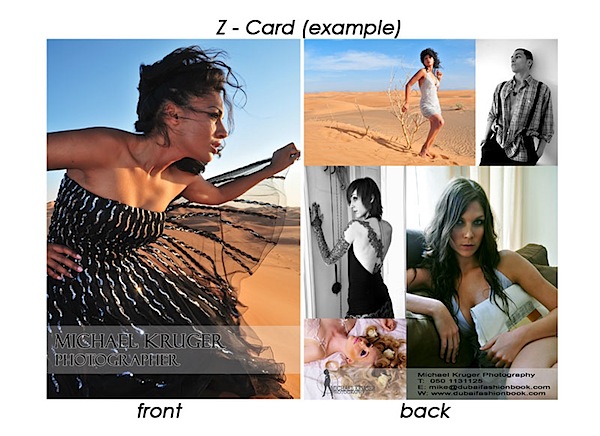- Research your ideas – get inspiration from your favorite magazines. Tear them out (know as a tear sheet in the industry) and create a mood board. This enables you and your team to have a visual idea of what you’re trying to achieve.
- Choosing your location – Choosing your location is an important part of the shoot. Helpful tips when choosing a location include: 1. Do you need permission to shoot there? 2. Can you access it at the right time of the day? 3. Are there changing facilities for models and prep rooms? 4. Will members of the public likely get in the way? As a fashion photographer my eyes and brain are constantly on the look out for a new and interesting location. Never stop looking is my advice to you.
- Styling – This refers to choosing the correct clothing or garments for a shoot. If you’re just starting out and can’t afford a fashion stylist or designer, again research ideas from magazines and try and put a look together. Styling also refers to hair and makeup. These are very, very important to your shoot. Hair and makeup stylist/artists can be found in various art colleges if you don’t want to pay for one. There are also budding stylists and artists who need to work on their own portfolios.
- Sourcing models – This brings me onto an important subject. All models, photographers, stylists and make up artists starting out need to develop a portfolio or book for themselves. It’s this common goal that binds everyone together in a symbiotic type of way. Starting out in fashion photography, you’ll often find everyone involved working on what’s known as a TFP basis. Back when almost all of us were using film, the term TFP stands for “TIME FOR PRINT”. A photographer and model would not charge each other for their services. Instead, after the shoot, the model would receive a selection of prints from the photographer and they’d both end up in a win, win situation. Both now having images for their portfolio without money crossing hands. Today, most of us use digital, so the term TFP/CD is used and this is the same concept, but instead of printing images off, the model receives a CD of selected images from the photographer. As far as sourcing models is concerned, when you’re starting out, use friends, family or partners. Its how I started. If you want someone more professional, approach agencies in your area or use fashion networking sites on the net. There are various, but the most popular being modelmayhem.com, a worldwide networking site.
- The shoot itself – On the day of the shoot it’s highly unprofessional for anyone to be late. In this business there are very few second chances, so whether it’s for a casting or a shoot, never be late! What normally happens first is hair and makeup. A word of warning, if done properly, this can take anything between 1½ to 2 hours before you start shooting, so factor this into your schedule. The good thing is it gives you as the photographer time to set yourself up and discuss any last minute ideas with your team. When you’re ready to shoot, it’s helpful to have tear sheets handy to refer back to. This helps the model with poses and creating the correct mood. I am always energetic on a shoot. Your passion and love for what you’re doing should come out automatically, so creating energy shouldn’t be a problem. Other ways of doing this is having some appropriate music in the background to get everyone energised!
- Post editing – This may be something people don’t really think about. Doing the actual shoot itself is only half the job done. Afterwards it’s imperative that you download, save and back up your images! If you’re at the point when you’re working for a client, the last thing you want is “no images!” Once saved, catalog them in an easy place to find. Sounds simple, but a lot of people don’t do this. After this, we use software referred to as the “digital dark room” This is where we can enhance colours, crop and sharpen images. We can remove blemishes on the skin if needed and also use software to create artwork, add text and create effects to your photos. The most commonly used and very professional software is Adobe Photoshop©. Again, having a sound knowledge to get the best out of your images during post editing is beneficial to you as a fashion photographer. There should be loads of colleges in your area that offer short courses in photo manipulation. The other great sources are online tutorials offered for free on the internet. Post editing is an important and necessary part of your job and will make you more saleable to your clients if you have good skills. Below is an example of this:
- Produce a portfolio book with all your best images. This can be handed to potential models, agencies and clients for there perusal.
- Try and produce an online version of your work. This can be done via building a simple website for yourself or by joining fashion based networking sites like the one mentioned before, modelmayhem.com
- Produce Z Cards. This is normally an A5 sized, two sided card with a few of your best images and all your contact details on. This is handy when networking at fashion events or when meeting clients or agencies. It offers them a quick reference to your work. Below is an example of my Z-Card.
- Never be without a business card. You could see a potential model you want to work with, or meet someone who could help you in the industry. Your card should have your contact details and also offer some direction to your work online for their viewing.
- Network, network, network! Try and attend as many fashion events as you can. It will give you a chance to look and learn as well as meet influential people in the industry. Never be scared to open your mouth and sell yourself.
 Fashion photography is considered to be the most glamorous and better paid genre of photography. At times this can be true, but it’s important to say that if you’re in it for these reasons you may be in for a bit of a shock.
Fashion photography is considered to be the most glamorous and better paid genre of photography. At times this can be true, but it’s important to say that if you’re in it for these reasons you may be in for a bit of a shock.
I entered the realm of fashion photography for a couple reasons. Ever since a young lad, I had a love for fashion and this never went away. Secondly my passion for photography as an expression for my creativity has always been a big part of my life. So, fashion photography was something that was bound to happen. I’m not in it for the glamor or the money, but rather as an outlet for my passion of photography and fashion.
As I’m sure most are aware, you’ll be put down more times than you’ll be picked up in this industry called fashion. If you believe in yourself and your work, create a unique style of your own, someone somewhere will give you a chance. Not all of us are going to be world famous, but what’s wrong with that. Keep your goals realistic and you have no idea where it could take you!
Here are some helpful tips for those of you budding fashion photographers out there.
1. Basic technical knowledge:
Having a sound knowledge of your camera and equipment and what their capabilities are will allow you to get the best out of them. Understanding what exposure means, what white balance is, how to control ISO’s are all basic things, but very important. It’s also important to have the useful accessories that help you capture that special image. Things like tri and monopods, reflectors and diffusers should all be an every day part of your kit. Having a good range of wide angle and zoom lenses also helps.
2. Understanding light and education:
Another basic element to photography, no matter what the genre is, understanding the different effects light can play in your fashion work. Do you use natural light, studio lighting or a combination? My advice to everyone starting out is to keep things simple and inexpensive. Use as much natural light as possible. It’s easier to control and is free. There will be a time when you’ll need and want to learn studio lighting. You may not know how to start? A lot of us working in the industry have had some kind of training to begin with. You may find it very useful to do a short course in studio photography. Not only does this expose you to different types of lighting such as flash and tungsten, but it also gives you the perfect opportunity to experiment and play with lighting systems and set-ups that you may otherwise never get the chance. When I was starting out, I used an old white sheet in my lounge and some lights I borrowed from a friend. With a bit of clever editing, your images can look great. Below is an image I took in my “home studio” and edited on Adobe Photoshop, proving you don’t need to fork out loads of money for a studio! The other choice is to become a photographer’s assistant and learn this way. So, in a nutshell, even a small amount of education will go a long way!

3. Understanding the process:
There is such a process behind producing a fashion images. Sure, to begin? with, you can start taking shots of your best friend posing in various? positions at a chosen location. As a fashion photographer, you need a ? team. You cannot do this alone. To build a team and produce an image? you need to understand what goes on behind the scenes:

4. Self Marketing:
Treating yourself as a business is something you may not have thought of, however, as a freelance fashion photographer, this is exactly what you are! The most fundamental part of your marketing is showing what you can do. This can only be done, by producing work. So it’s important that you arrange your own shoots as often as you can when starting out. Use the advice given to you in “Understanding the Process” in section 3. By producing work you can start marketing yourself. These are the various ways of doing so:

Visit Icip2idayusof for daily updated images of art collection









No comments:
Post a Comment